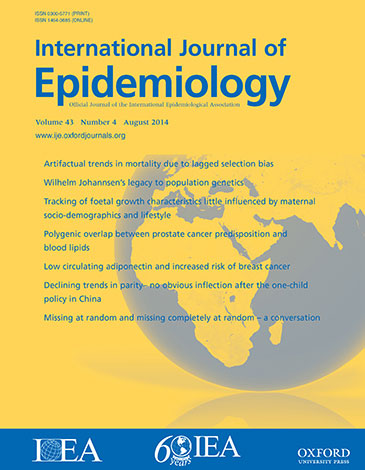Evaluating the effectiveness of the human papillomavirus vaccination programme in England, using a regression discontinuity design
IF 5.9
2区 医学
Q1 PUBLIC, ENVIRONMENTAL & OCCUPATIONAL HEALTH
引用次数: 0
Abstract
Background In England, the national human papillomavirus (HPV) immunization programme was introduced in 2008 to prevent cervical cancer. Girls aged 12–13 years were offered routine vaccination and those aged 14–18 years in 2008 were offered ‘catch-up’ vaccination. We evaluate the effect of the HPV catch-up vaccination programmes on cervical cancer and cervical dysplasia diagnoses, and provide an estimate of the vaccine effectiveness. Methods Using the 2011 Census, Hospital Episode Statistics, and mortality data for the population of England, we exploit the cut-off in eligibility and apply a regression discontinuity design to assess the impact of HPV vaccination on cervical disease. Results Vaccination reduced the incidence of cervical dysplasia and cancer diagnoses by 31% and 75%, respectively, at ages 23–30 years in girls offered catch-up vaccination at ages 17–18 years compared with those who were just above the eligibility age for the catch-up vaccination, with a clear discontinuity. Reductions continued amongst girls offered routine vaccination. Conclusion These estimates, obtained by using a quasi-experimental approach, are similar to vaccine effectiveness estimates based on more traditional approaches. This approach provides further evidence of the HPV vaccination programme reducing adverse cervical outcomes in young women and could be used for future studies to evaluate major changes in HPV vaccination policy and for studies of longer-term outcomes including other cancers and deaths.使用回归不连续设计评估英国人乳头瘤病毒疫苗接种计划的有效性
背景:英国于2008年推出了全国人乳头瘤病毒(HPV)免疫规划,以预防宫颈癌。为12-13岁的女孩提供常规疫苗接种,2008年为14-18岁的女孩提供“补种”疫苗接种。我们评估了HPV补种疫苗计划对宫颈癌和宫颈发育不良诊断的影响,并提供了疫苗有效性的估计。方法使用2011年英国人口普查、医院事件统计和死亡率数据,我们利用资格的截止点,并应用回归不连续设计来评估HPV疫苗接种对宫颈疾病的影响。结果在17-18岁接种补种疫苗的女孩中,23-30岁的宫颈发育不良和癌症诊断率分别比刚好超过补种年龄的女孩低31%和75%,具有明显的不连续性。接受常规疫苗接种的女孩继续减少。结论使用准实验方法获得的这些估计值与基于更传统方法的疫苗有效性估计值相似。该方法为HPV疫苗接种规划减少年轻女性的不良子宫颈结局提供了进一步的证据,并可用于未来的研究,以评估HPV疫苗接种政策的重大变化,以及研究包括其他癌症和死亡在内的长期结局。
本文章由计算机程序翻译,如有差异,请以英文原文为准。
求助全文
约1分钟内获得全文
求助全文
来源期刊

International journal of epidemiology
医学-公共卫生、环境卫生与职业卫生
CiteScore
13.60
自引率
2.60%
发文量
226
审稿时长
3 months
期刊介绍:
The International Journal of Epidemiology is a vital resource for individuals seeking to stay updated on the latest advancements and emerging trends in the field of epidemiology worldwide.
The journal fosters communication among researchers, educators, and practitioners involved in the study, teaching, and application of epidemiology pertaining to both communicable and non-communicable diseases. It also includes research on health services and medical care.
Furthermore, the journal presents new methodologies in epidemiology and statistics, catering to professionals working in social and preventive medicine. Published six times a year, the International Journal of Epidemiology provides a comprehensive platform for the analysis of data.
Overall, this journal is an indispensable tool for staying informed and connected within the dynamic realm of epidemiology.
 求助内容:
求助内容: 应助结果提醒方式:
应助结果提醒方式:


